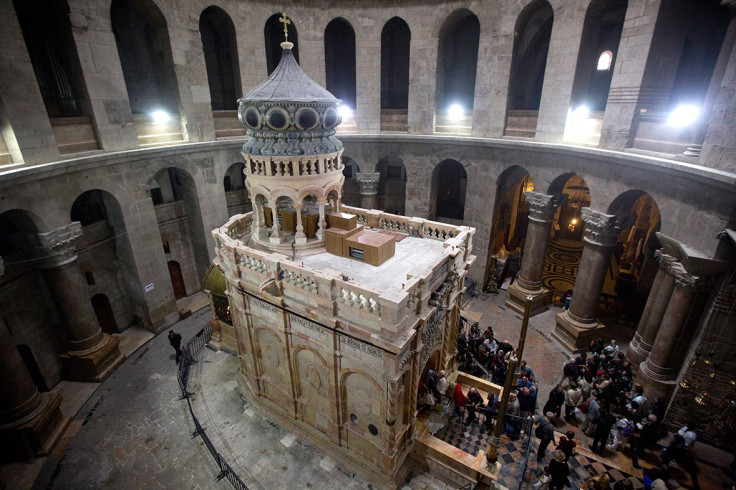How old is the tomb of Jesus Christ? Scientists reveal its age is much older than previously thought
Scientists reportedly found that the oldest architectural remains of the holy site are around 1,700 years old.

For the first time ever, scientists have reportedly dated what is believed to be the tomb of Jesus Christ. Recent tests conducted by researchers on the oldest architectural remains of the holy site – a limestone cave in the Church of the Holy Sepulchre in Jerusalem – reveal that the holy site is much older than previously thought.
National Geographic reported that scientists have discovered the limestone cave to be around 1,700 years old, dating it to around 345 CE. However, previous evidence suggested that the site was no older than 1,000 years old, dating back to the Crusader period.
The cave, which is widely considered to be the site of Jesus' crucifixion, burial, and resurrection, as referred to in the Bible as Calvary or Golgotha, has never been moved, researchers reportedly uncovered during a year-long study.
Scientists from the National Technical University of Athens analysed the chemicals in the architectural remains of the ancient vault to determine how long it had been since the site was last exposed to light. National Geographic reported that the technique, called optically stimulated luminescence (OSL), helped reveal how long ago quartz sediment in samples from the tomb's mortar were exposed to light.
The new findings dates the original construction of the site to the time of the very first Christian Roman emperor Constantine. National Geographic reported that the tomb was opened to the public in October 2016, when scientists made a surprising discovery in the Edicule – the shrine that encloses Christ's tomb. Researchers reportedly found an older, broken marble slab under the original limestone "burial bed".
The recent test results reportedly reveal that the newly-discovered lower slab was likely placed in the mid-fourth century under the orders of Emperor Constantine. "Obviously that date is spot-on for whatever Constantine did," archaeologist Martin Biddle told the magazine. "That's very remarkable."
"It is interesting how [these] mortars not only provide evidence for the earliest shrine on the site, but also confirm the historical construction sequence of the Edicule," the Edicule restoration project's chief scientific supervisor Antonia Moropoulou, told National Geographic.
The findings of the new study by Moropoulou and her team are slated to be published in an upcoming issue of the Journal of Archaeological Science: Reports.






















